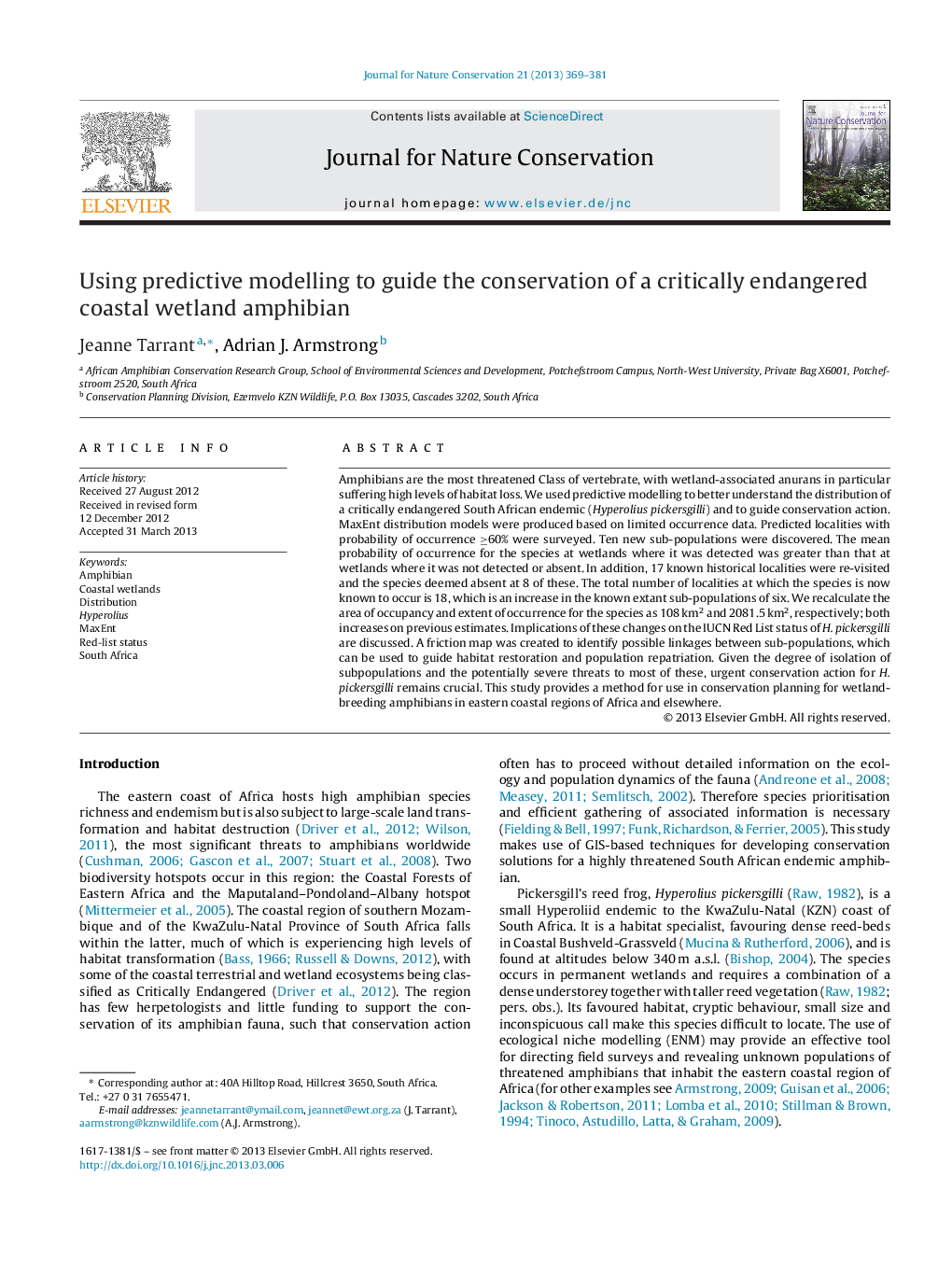| Article ID | Journal | Published Year | Pages | File Type |
|---|---|---|---|---|
| 4399890 | Journal for Nature Conservation | 2013 | 13 Pages |
Amphibians are the most threatened Class of vertebrate, with wetland-associated anurans in particular suffering high levels of habitat loss. We used predictive modelling to better understand the distribution of a critically endangered South African endemic (Hyperolius pickersgilli) and to guide conservation action. MaxEnt distribution models were produced based on limited occurrence data. Predicted localities with probability of occurrence ≥60% were surveyed. Ten new sub-populations were discovered. The mean probability of occurrence for the species at wetlands where it was detected was greater than that at wetlands where it was not detected or absent. In addition, 17 known historical localities were re-visited and the species deemed absent at 8 of these. The total number of localities at which the species is now known to occur is 18, which is an increase in the known extant sub-populations of six. We recalculate the area of occupancy and extent of occurrence for the species as 108 km2 and 2081.5 km2, respectively; both increases on previous estimates. Implications of these changes on the IUCN Red List status of H. pickersgilli are discussed. A friction map was created to identify possible linkages between sub-populations, which can be used to guide habitat restoration and population repatriation. Given the degree of isolation of subpopulations and the potentially severe threats to most of these, urgent conservation action for H. pickersgilli remains crucial. This study provides a method for use in conservation planning for wetland-breeding amphibians in eastern coastal regions of Africa and elsewhere.
